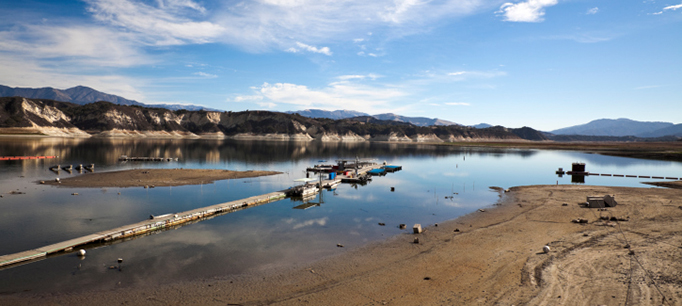For more than a year, Congress has been discussing actions that the federal government can take to help with California’s drought emergency. Federal agencies, using their existing authorities, have been providing modest amounts of help, including funding water conservation efforts, livestock disaster assistance, and supporting rural communities facing job losses from crop fallowing and drinking-water shortages. To date, however, no substantive federal legislation has been passed that addresses the drought.
Granted, the federal government cannot make it rain. But there are other things it can do to help California get through this drought and better prepare for future droughts. Along with a group of colleagues in our research network, we have compiled a list of 10 ways the feds can help. Some of these can be accomplished under existing executive authority, and some require new legislation. Here is the short list; more details can be found on the UC Davis Center for Watershed Sciences website.
Near-term opportunities for federal drought support include:
- Amend the Safe Drinking Water Act to allow its Revolving Funds to be used for small, local water systems that serve fewer than 15 connections (many of which are facing dry wells with the drought).
- Allow Central Valley Project contractors to carry over water in federal reservoirs as a hedge against future drought conditions, and to discourage potentially wasteful “use it or lose it” behavior, which can result in lower reservoir levels. During droughts, the U.S. Bureau of Reclamation should allow carry-over storage. And require the Army Corps of Engineers to use real-time forecasts of storms to reduce the risks of emptying reservoirs during the winter.
- Make it easier to trade water during drought emergencies.
- Facilitate distribution of federal cost-shares for local development of non-traditional sources of water and other drought-resiliency projects, by allowing agency federal department heads to give funds directly to states.
- Collaborate with California to develop a drought biodiversity management plan modeled after successful approaches used by Australia during its Millennium Drought.
- Expand the Central Valley Project’s ecosystem restoration fund by increasing per acre-foot fees on project water during drought and establishing a surcharge on water trades that use federal infrastructure.
- Speed the listing of species threatened with extinction during drought emergencies and implement recovery actions.
- Increase federal agency support for improved water information systems, and increase technical support, notably from the US Geological Survey and National Weather Service.
- Longer term: Create an Independent System Operator (ISO)—similar to the ISO that currently manages California’s electrical grid—that would merge state and federal water projects into a single, public utility.
- Longer term: Through legislation similar to the Coastal Zone Management Act, promote coordinated and integrated water management that addresses related issues of supply, quality, drought, flood and ecosystem challenges at a regional scale.
These 10 federal actions would help California better manage its current drought and help us prepare for inevitable future droughts.




